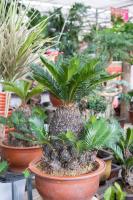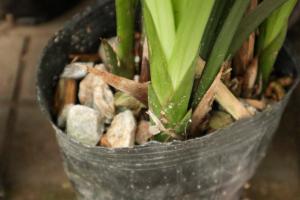What to Do With Plant Pots When They Have Puddles
If you are an avid gardener, you know how important it is to take care of your plants. One important aspect of taking care of your plants involves the use of plant pots. Plant pots are a great way to grow your plants in a controlled environment that can be easily manipulated to meet the specific needs of your plants. However, plant pots can also present their own unique set of challenges, especially when they have puddles. In this article, we will explore what to do with plant pots when they have puddles.
Understanding Plant Pot Drainage
One of the most important things to understand when it comes to dealing with plant pots and puddles is plant pot drainage. Every plant pot needs to have adequate drainage in order to prevent the build-up of excess water. Waterlogged plant pots can quickly become a breeding ground for bacteria and fungi that can harm your plants.
Most plant pots come with drainage holes in the bottom that allow excess water to drain out. These drainage holes are an essential part of plant pot design and need to be kept clear at all times. If you have a plant pot that is not draining properly, it is important to check the drainage holes and clear any blockages.
Avoid Overwatering Your Plants
One of the most common causes of plant pot puddles is overwatering. Overwatering your plants can quickly lead to waterlogged soil and excessive amounts of water in your plant pot. If you notice puddles in your plant pot, it is important to reduce the amount of water you are giving your plants.
When watering your plants, it is important to only water them when they need it. Different plants have different watering needs, so it is important to do your research and find out what works best for your specific plant. As a general rule, most plants prefer to be watered when the top inch of their soil is dry to the touch.
Improve Plant Pot Drainage
If you have a plant pot that is consistently holding puddles, it may be time to improve its drainage. One way to do this is to add more drainage holes to the bottom of your plant pot. This will allow excess water to drain out more quickly and prevent the build-up of puddles.
You can also add a layer of gravel or stones to the bottom of your plant pot to create a drainage layer. This will help water to drain away from the plant roots and prevent water from pooling in the bottom of the pot.
Repot Your Plant
If all else fails, it may be time to repot your plant. Repotting your plant is a great way to give it a fresh start and eliminate any drainage problems that may be occurring. When repotting your plant, make sure to use a pot that has adequate drainage holes and is the right size for your specific plant.
Repotting your plant also gives you the opportunity to refresh the soil and add new nutrients. This can help your plant to grow stronger and healthier in the long run.
Conclusion
Plant pots and puddles can be a frustrating problem for any gardener to deal with. However, by understanding plant pot drainage, avoiding overwatering, improving plant pot drainage, and repotting your plants, you can keep your plants healthy and happy. With a little bit of care and attention, you can enjoy beautiful, thriving plants in your home or garden for years to come.

 how many times do yo...
how many times do yo... how many planted tre...
how many planted tre... how many pine trees ...
how many pine trees ... how many pecan trees...
how many pecan trees... how many plants comp...
how many plants comp... how many plants can ...
how many plants can ... how many plants and ...
how many plants and ... how many pepper plan...
how many pepper plan...
































